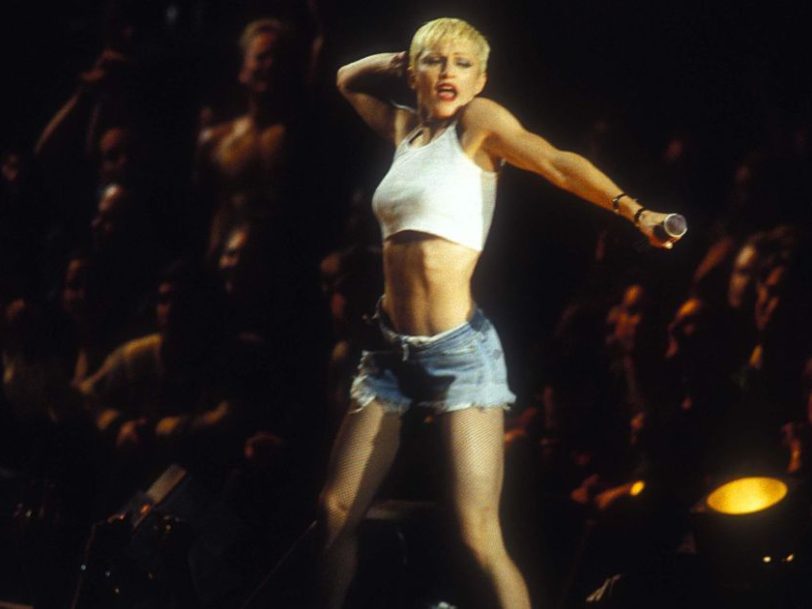Just a decade after her self-titled debut album hit the shops, Madonna’s career appeared to have completed an entire orbit around the supernova of global fame. Her breakthrough had swiftly scaled once MTV got the Like A Virgin album’s singles in their sights: she’d enjoyed a solid run in the super-league with that record’s follow-up, True Blue, and basked in creative recognition with Like A Prayer, while the controversial Erotica pushed the envelope beyond anything yet seen in pop music. Launched in the autumn of 1993, The Girlie Show tour was crafted to remind everyone just what had made Madonna one of the best musicians of the 80s.
Listen to the best of Madonna here.
The setlist: A sharp, slick affair
The structure and storytelling of Madonna’s previous tour, Blond Ambition, had established a new template and creative standard for stadium concerts. Three years later, The Girlie Show was a sharper, almost slicker affair, segmented into four simple sections.
Opening proceedings with Madonna’s recent hit single, Erotica, the Dominatrix portion showcased the erotic, voyeuristic themes omnipresent in Madonna’s early-90s work. The next section, Studio 54, started as an effervescent headrush before, almost as quickly, darkening with reflections on the AIDS crisis, which was arguably at its vicious peak as The Girlie Show made its way around the world. In 1993, there wasn’t much optimism that the health disaster would be over any time soon, and as one of the most pioneering LGBTQ+ musicians of the era, Madonna made awareness of HIV’s dangers and the plight of those affected a signature of her work.
The third segment, Weimar Cabaret, was the show’s lightest, with campy crowd-pleasers such as Like A Virgin performed in a Marlene Dietrich style, along with a rare airing for I’m Going Bananas, from 1990’s I’m Breathless soundtrack album. The final two songs of The Girlie Show setlist – Justify My Love, in a Cecil Beaton homage, and a celebratory Everybody – made up the fourth act: the night’s inevitable encore.
After a decade in the business, Madonna wasn’t about to take the easy option by simply parading her catalogue of hits in a crass attempt to win favour. Many of the best Madonna songs, among them Vogue, Express Yourself, La Isla Bonita and Holiday, were present and correct with the aforementioned Like A Virgin, but that was it. Anyone hoping for a quickfire rendition of Madonna’s groundbreaking run of No.1 singles was at the wrong show, with the “Queen Of Pop”’s restless focus on moving things along already in evidence on what would become her last international tour of the 20th century.




